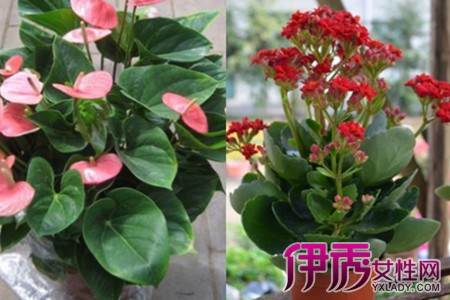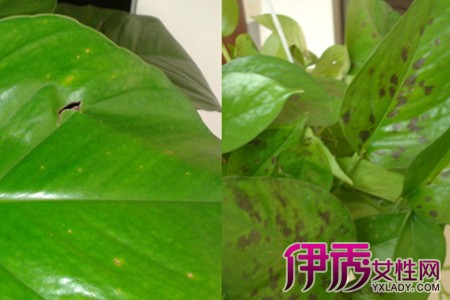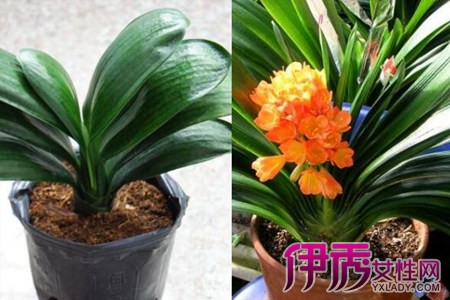To understand what's going on with insects in potted plants, three ways to teach you how to control pests.

Potted plants grow indoors, so they are very easy to produce bugs for a variety of reasons. Today we are going to introduce to you several causes and treatment methods that will cause bugs in flowerpots, hoping to help more friends in need.
One of the reasons for attracting insects to potted plants: improper fertilization. Some people like to use their own home rice or egg water to water the flowers, thinking that this can add nutrition to the flowers. In fact, this method nourishes not only the flowers, but also the parasites in the flowerpot. So if you fertilize the flowers, try to use regular fertilizers such as flower nutrients, so that strange bugs will not be born in the flowerpot.
The second reason why potted plants attract insects is that the potted soil is too wet and the sun is not well ventilated. Potted flowers need limited water and nutrients because of their limited growth. If the soil is always watered when the soil is not dry, the pot soil is easy to breed bacteria when it is moist for a long time, and the bugs in many flowerpots are derived from such bacteria. For such bugs, all you have to do is to water the roots of flowers with garlic juice or pour pots of flowers to expose the pictures of insects in the sun.
The third reason why potted plants attract insects: withered leaves and rotten roots are not cleaned up in time. Some people do not have a good habit of growing flowers. Some leaves fall not out of the flowerpot, but allow more and more dead leaves in the flowerpot. This practice is most likely to cause flowers to attract insects, because the withered leaves will give birth to parasitic bacteria after being soaked, and there will be more and more bugs in the long run. The method of treatment is to clean up the flowerpot first, and then change the soil for the flowers, so as to ensure the health of the flowers.
Many people think that the bugs in flowerpots are harmless and will not have a serious impact on flowers. This is not the right idea, because worms are bacteria from soil or flowers. If minor diseases are not cured, serious diseases are not far away, flowers will be slowly attacked by insects if they are not controlled by pests, and it will not be easy to control flowers until they are completely invaded by insect pests.
How to prevent and control diseases and insect pests of potted aloe? Control methods of diseases and insect pests of potted aloe
How to prevent diseases and insect pests of potted aloe? Do you know all the prevention and control methods of potted aloe plant diseases and insect pests? Aloe is an evergreen, succulent herb, which is widely planted. The prevention and control of plant diseases and insect pests of potted aloe is the key. Then the editor will introduce you in detail the prevention and control methods of potted aloe diseases and insect pests.
Prevention and control methods of diseases and insect pests of potted aloe:
The common diseases of aloe include anthracnose, brown spot, leaf blight, white silk disease and bacterial diseases. For family potted aloe, disease prevention should be given priority to. Disease-resistant varieties and high-quality disease-free seedlings should be selected before the disease occurs, and its ornamental value has decreased. Before the occurrence of the disease, or after the diseased parts of the diseased plants were removed, 0.5-0.8 Bordeaux solution of lime combined with new high-fat membrane was applied to the leaves of aloe vera, which could effectively prevent and inhibit the invasion and spread of bacteria. Disease treatment. After the occurrence of the disease, it can kill the pathogen in aloe and control the spread of the disease by direct application of internal absorption and conduction therapeutic agents such as topirazine, pyrethromycin, and antibiotics such as streptomycin sulfate, agricultural streptomycin, chunramycin, Jinggangmycin and so on.
Teach you how to use household necessities to control insect pests
The biggest headache for flower lovers in the process of raising flowers in the family is how to control diseases and insect pests. It is summer soon, which is the season of high incidence of diseases and insect pests. The following editor will introduce the methods of disinfestation for your reference and study.
First of all, the control of insect pests should give priority to prevention, and try to avoid flowers bringing diseases and insects into the house. When purchasing potted flowers, you must carefully check whether the flowers grow normally, whether there are all kinds of spots on the leaves, touch the leaves with your hands, and check carefully whether there are insects in the back, petiole, veins, axils, etc., to ensure that the purchased flowers are free from diseases and insect pests, which is the most critical link to control indoor potted flower diseases and insect pests.
Once diseases and insect pests are found to invade the plant, measures should be taken immediately.
Artificial insecticidal: when the number of pests is small, artificial insecticidal methods can be used. Spread a layer of newspaper under the flowerpot, gently brush off aphids, red spiders and other insects with a soft brush, and then rinse the affected parts with clean water. You can also wear gloves and use your hands to kill aphids, red spiders, shell insects, whitefly and so on, and then rinse the affected parts with clean water.
Self-made armyworm board insecticidal: the transparent wide tape is fixed outward on the yellow cardboard and hung near the insecticidal flowers, which can trap and kill white whitefly adults, winged aphids and so on.
Self-made chemicals to control diseases and insect pests: if pesticides are used in the limited indoor space, it will seriously pollute the environment and have a negative impact on human health, so some special prevention and control methods of safety and environmental protection can be adopted.
Tobacco liquid: soak 50 grams of tobacco powder or cut tobacco in 1 liter of water, filter after 24 hours, pour the filtrate into the flowerpot, kill ants, earthworms and other soil pests in the basin soil; you can also use filtrate (or add a little soapy water in the filtrate) to spray the aboveground part of flowers to control aphids, red spiders and so on.
Garlic liquid: 60 grams of garlic is mashed and added to 1 liter of water, soaked and filtered, and the filtrate is sprayed on the leaf surface once a day for 3 to 4 times, or the garlic liquid is directly applied to the leaves with a brush or toothbrush, which can be used to control powdery mildew and leaf spot, and can also kill aphids, red spiders and shell insects; irrigating basin soil with garlic filtrate can kill earthworms and ants in the basin soil, and has a certain control effect on root rot.
Green onion liquid: mash 100 grams of green onions, add 1 liter of water, soak for 12 hours, spray the aboveground parts of flowers with filtrate, many times a day for three or four days, can control aphids, powdery mildew and so on.
Ginger juice: mash 50 grams of ginger, add 1 liter of water, soak for 12 hours, and spray the aboveground part of potted flowers with filtrate to prevent leaf spot, coal dirt, rot, aphids, red spiders and so on.
Chilli liquid: take 100 grams of dried chili, cut it into pieces, boil it in 1 liter of water, boil it in low heat for 20 minutes and filter it. Spraying the aboveground part of flowers with filtrate can control aphids, red spiders, whitefly and other pests. Pouring into the basin soil can control soil pests such as grubs.
Pepper liquid: put 100 grams of pepper in 1 liter of water and boil it into a 0.5 liter liquid. After diluting 6 to 7 times, spray the aboveground parts of flowers to control whitefly, aphids and shell insects.
Tomato leaf liquid: 50 grams of fresh tomato leaves are mashed and soaked in 150 grams of water for 6 hours. after filtration, the above ground parts of flowers are sprayed with filtrate to prevent aphids and red spiders.
Tomato juice: mash the tomato to take the juice, mix well according to the proportion of the original juice and water at 3:2, and then add a little washing powder, spray the aboveground part of the flowers to control red spiders.
Citrus peel liquid: 100 grams of citrus peel is broken into small pieces and soaked in 1 liter of water for 24 hours. After filtration, the filtrate is sprayed on the aboveground part of flowers to prevent aphids and red spiders.
Rice vinegar: dilute rice vinegar 150 to 200 times, spray on the aboveground part of flowers, spray once every 7 days or so, even 3 to 4 times, can control powdery mildew, leaf spot, etc., but also has a certain control effect on scale insects.
Wind oil essence: drop 3 drops of wind oil essence in 100 ml water, stir evenly and spray the aboveground part of flowers, which can control aphids, shell insects, red spiders and so on.
Alcohol: dilute alcohol with water 3 to 5 times, spray the damaged parts of flowers, can prevent root rot, stem rot and so on.
Laundry powder: take 5 grams of washing powder, add it to 1 liter of water, fully dissolve, spray the aboveground part of flowers, and control aphids, shell insects, whitefly and so on.
Soap liquid: take 5 grams of soap, add 250 ml of hot water, fully dissolve, spray the aboveground part of flowers, can control aphids, shell insects, whitefly and so on.
If the above methods still do not work, then only consider pesticide spraying treatment, common pesticides including imidacloprid, sinomenine, avermectin, phoxim and so on, these insecticidal effect is good, emperor poison, low residue and so on. But drugs are three-thirds toxic, so be sure to wear gloves and masks when using pesticides to prevent poisoning.
Conclusion: the above is the knowledge about raising flowers and removing pests in the family. I hope it will be helpful for everyone to control insect pests.
- Prev

Understand why green pineapple leaves have black spots. Experts teach you how to treat flowers.
This kind of flower is very popular in many areas because it can absorb formaldehyde. But some people have found that the green pineapple leaves at home will have long spots. Today we will tell you what is the reason why the green pineapple leaves have black spots and how to treat them.
- Next

Master the seed planting method of Cymbidium, the flowering period is more beautiful and luxuriant
It can be said that the gentleman orchid is a kind of flower that is more difficult to breed, and many people say it is very difficult to breed. But orchids are very beautiful when they bloom, so many people want to raise orchids at home. The editor will share the method of planting magnolia today.
Related
- Fuxing push coffee new agricultural production and marketing class: lack of small-scale processing plants
- Jujube rice field leisure farm deep ploughing Yilan for five years to create a space for organic food and play
- Nongyu Farm-A trial of organic papaya for brave women with advanced technology
- Four points for attention in the prevention and control of diseases and insect pests of edible fungi
- How to add nutrient solution to Edible Fungi
- Is there any good way to control edible fungus mites?
- Open Inoculation Technology of Edible Fungi
- Is there any clever way to use fertilizer for edible fungus in winter?
- What agents are used to kill the pathogens of edible fungi in the mushroom shed?
- Rapid drying of Edible Fungi

